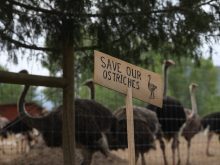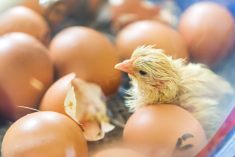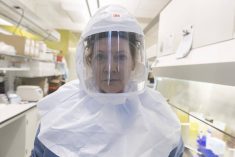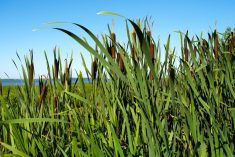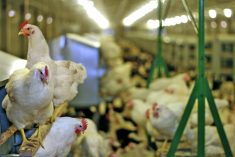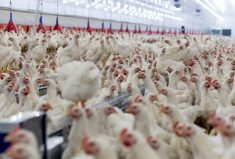Spring may be a time of renewal and anticipation of a new crop, but for many poultry producers, this year it’s a time of uncertainty about a return of avian influenza.
“We prepare every year for bird flu, but knowing what we went through last year, I think everyone is a lot more nervous,” said Teryn Girard, a poultry veterinarian with Prairie Livestock Veterinarians, based in Red Deer and Lethbridge. She is a member of the Alberta Poultry Industry Emergency Management Team.
“We’re starting to watch the (wild bird) migratory patterns and realizing that our first outbreak last year came at the beginning of April,” Girard said in mid-March.
Read Also

Moo translator and methane measures: There’s an app for that
Dalhousie University researchers use artificial intelligence to create new dairy farm apps that analyze cattle sounds and measure methane.
The Canadian Food Inspection Agency says avian influenza is a viral infection that can affect all birds and sometimes mammals. There are at least 15 forms of the disease, caused by multiple strains of the type A influenza virus. Birds spread the disease through secretions and droppings. Some birds can carry the virus without symptoms but infect others.
Avian influenza is not a food safety issue. Humans cannot catch avian influenza from eating eggs or poultry products.
The strain of avian influenza now in circulation is a highly pathogenic H5N1 subtype. Wild birds used to be only a reservoir, but now even they are dying from the strain.
Avian influenza was first found in an Alberta flock in spring 2022. Since then, more than 60 premises in the province have been infected and 3,657,000 birds have been depopulated. Outbreaks happened from April to June 2022 and from August to November 2022, coinciding with wild bird migration. As of late March, no cases had been found since Nov. 22, 2022.
Tracking migration
“We’re watching the migratory bird pathways quite a lot more closely,” said Girard.
Members of the Alberta Poultry Industry Emergency Management Team have been monitoring the flyways. The monitoring of wild birds can be seen at a website called BirdCast.
Groups have also been speaking with other provinces.
“Nova Scotia and Quebec have some cases, similar to what they had last year. We just need to communicate with producers,” said Gerard.
“Right now, we’re watching the wild birds and the weather, and I think that’s all we can do right now besides just making sure that biosecurity is top-notch, which it always is.”
“Things have been a little slower over the winter,” said Jeff Notenbomer, a hatching egg producer from Monarch.
“We track avian influenza as it moves down across North America and into South America over the winter. We saw it go through the States and then we saw it go into Mexico and then we saw it go into South America and now we’re back up into the States again,” he said.
“I read that there were some positives in the States last month, so that means it’s working its way up. As we get warmer, we’re going to see more challenges, probably in the next 40 or 50 days,” Notenbomer said March 10.
He noted that increased biosecurity is a key measure for prevention.
“Be very mindful of the bedding that you use inside the barn. You have to think about everything that travels into the barn and how it can be contaminated, from feed to bedding to tools to us as workers. Something we worry about too is just air — dust blowing in the wind.”
But farmers are one of the first lines of defence because they are in their barns every day.
“There’s no magic pill right now. It’s just being diligent as farmers. There are certain technologies that as an industry we’re exploring,” he said.
Some farmers have started using sweeping lasers or air cannons to scare wild birds away. Others are looking at air filtration inside their barns.
“We just want producers to know that if they have any questions or concerns or if they want a biosecurity audit, they can reach out for help,” said Girard.
“I think that a really important part of it is that we’ve been through it. Protocols have been set so it’s not this great unknown anymore. If a producer finds out they have avian influenza in their flock, it will be OK.”
Affected producers can reach out to their feather boards, and to the Alberta Poultry Industry Emergency Management team. Compensation for depopulated flocks is available from the provincial government.
“The CFIA has also been really great to work with,” said Girard. “Last year, it was very scary because it was so unknown. This year, we’re ready for it. We just need to come together and support poultry producers as much as possible. This is a very stressful time for them.”
She said producers shouldn’t be afraid to contact their feather boards for mental health resources.
“The industry has done a great job of making sure there are classes about mental health available for them and given them training on how to speak about mental health. There are producer mentors who have gone through avian influenza who are willing to help other producers as they are going through it.”




